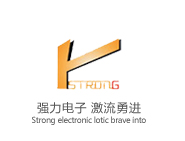- PRODUCTS
Your location??Home > Products > Productinfo
-
Productinfo

MF007
ferrite magnet is manufactured from oxide materials using powder metallurgical process.
Our huge inventory of ceramic magnet can ensure us to supply assortment of goods to choose from, which includes arc segments, ring types, discs, blocks, bars and more, in a variety of sizes and shapes. This selection includes all grades, oriented and non-oriented, bi-pole and multi-pole magnets.
Based on several decades of production history, our company have more than 1,000 kinds of existing products, most of which can be delivered in a short time.
We can also make unusual shapes according to customers' requirements, and the shapes can be made by means of molding, cutting, grinding and drilling.
We have rich experiences in supplying Europe motor users, and we are TS16949 certified. We'd pleased to supply full set of PPAP reports with samples to you.
Ferrite (ceramic) magnets are essentially composed of oxide materials with barium carbonate or strontium carbonate, manufactured under a powder metallurgical process.
The feature of low recoil permeability, along with the high coercive force, makes them highly resistant to demagnetizing fields. In addition, their relatively low specific density and economical cost are also very attractive to the magnet designers. When designing the ferrite magnets for a particular application, primary consideration should be given to its shape limitation due to the powder metallurgical manufacturing process and the temperature dependence of ferrite materials.
Ferrite magnets has good anti-corrosion performance, no surface treatment needed. There are two manufacturing process for ferrite magnets: dry process and wet process. By dry process, can produce isotropic and anisotropic magnets; by wet process, only anisotropic magnets can be produced. Isotropic ferrite magnets are not oriented and can be magnetized in any direction; anisotropic ferrite magnets are different, they are all oriented in the manufacturing direction, and should be magnetized in the direction of orientation. For dry process, the tool can be changed and developed easily, while for wet process, it is complicated to change the tool and the tooling charge is much higher. At present, we have put our emphasis on arc segment magnets for electric motors, disc magnets and block magnets for special applications.
Our huge inventory of ceramic magnet can ensure us to supply assortment of goods to choose from, which includes arc segments, ring types, discs, blocks, bars and more, in a variety of sizes and shapes. This selection includes all grades, oriented and non-oriented, bi-pole and multi-pole magnets.
Based on several decades of production history, our company have more than 1,000 kinds of existing products, most of which can be delivered in a short time.
We can also make unusual shapes according to customers' requirements, and the shapes can be made by means of molding, cutting, grinding and drilling.
We have rich experiences in supplying Europe motor users, and we are TS16949 certified. We'd pleased to supply full set of PPAP reports with samples to you.
Ferrite (ceramic) magnets are essentially composed of oxide materials with barium carbonate or strontium carbonate, manufactured under a powder metallurgical process.
The feature of low recoil permeability, along with the high coercive force, makes them highly resistant to demagnetizing fields. In addition, their relatively low specific density and economical cost are also very attractive to the magnet designers. When designing the ferrite magnets for a particular application, primary consideration should be given to its shape limitation due to the powder metallurgical manufacturing process and the temperature dependence of ferrite materials.
Ferrite magnets has good anti-corrosion performance, no surface treatment needed. There are two manufacturing process for ferrite magnets: dry process and wet process. By dry process, can produce isotropic and anisotropic magnets; by wet process, only anisotropic magnets can be produced. Isotropic ferrite magnets are not oriented and can be magnetized in any direction; anisotropic ferrite magnets are different, they are all oriented in the manufacturing direction, and should be magnetized in the direction of orientation. For dry process, the tool can be changed and developed easily, while for wet process, it is complicated to change the tool and the tooling charge is much higher. At present, we have put our emphasis on arc segment magnets for electric motors, disc magnets and block magnets for special applications.
-
ZheJiang DongYang Strong Electron Co., Ltd. All rights reserved ??ICP??11024802??
-
Technical Support???????????

